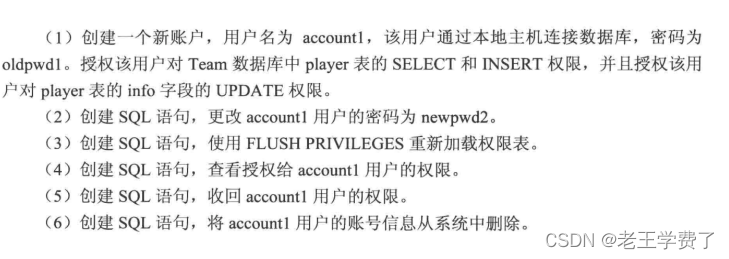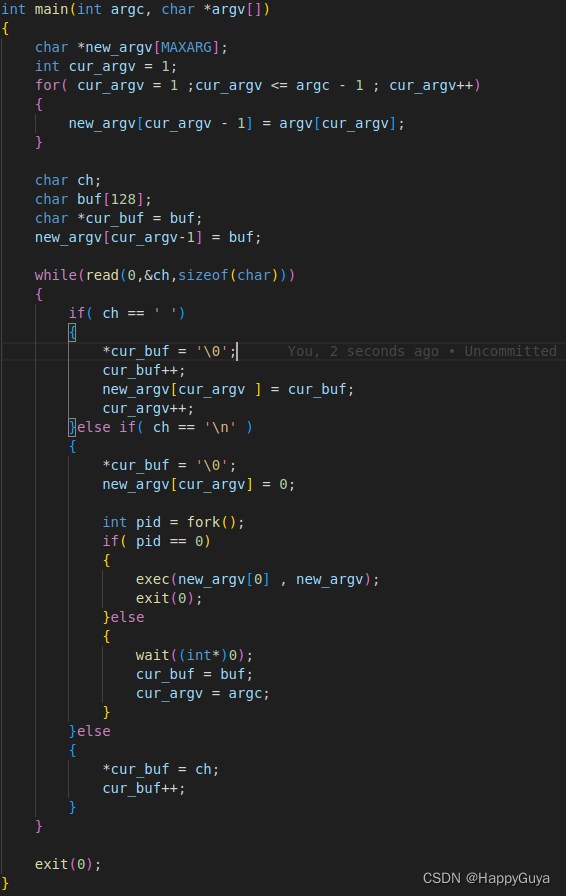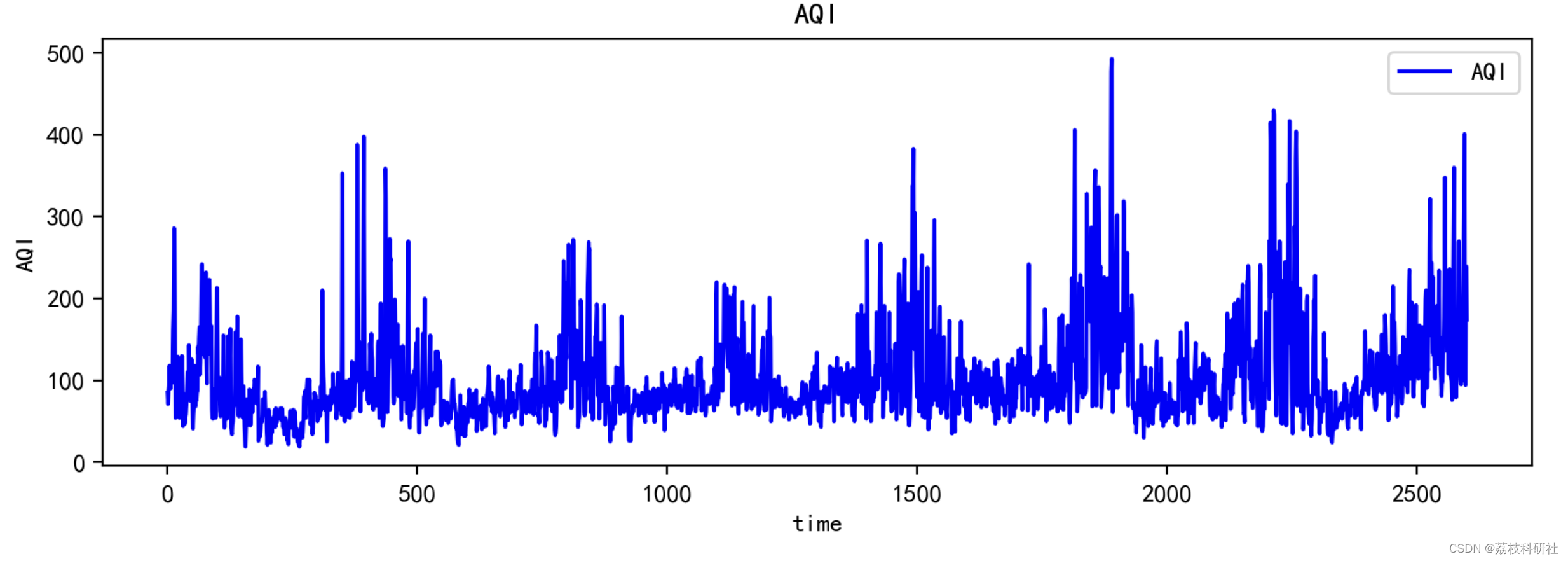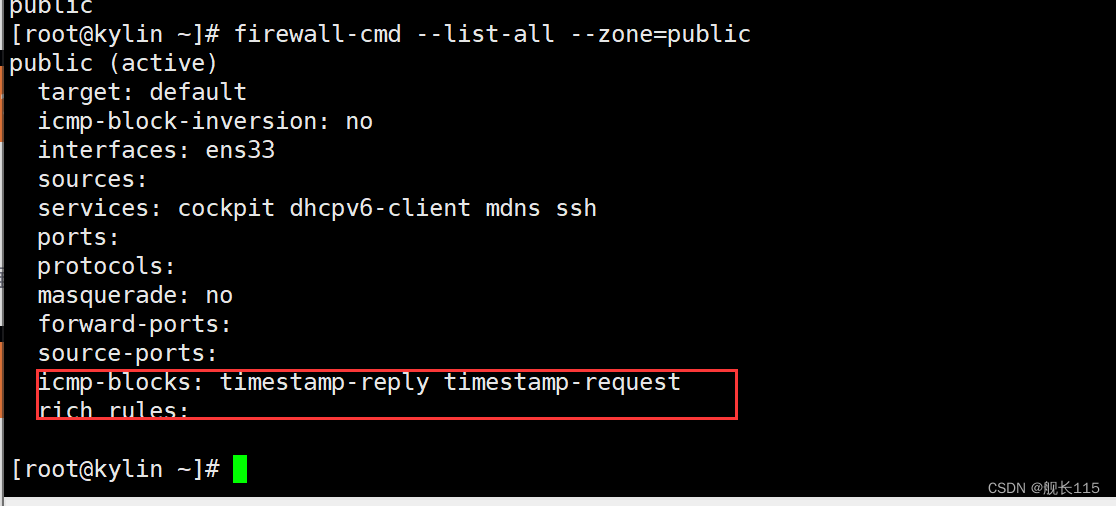
目录
通过元素自身实现比较规则
通过比较器实现比较规则
双例集合
TreeMap容器的使用
Iterator接口
Collections工具类
通过元素自身实现比较规则

在元素自身实现比较规则时,需要实现Comparable接口中的 compareTo方法,该方法中用来定义比较规则。TreeSet通过调用 该方法来完成对元素的排序处理。
创建Users类
public class Users implements Comparable<Users>{private String username;private int userage;public Users(String username, intuserage) {this.username = username;this.userage = userage;}public Users() { }@Overridepublic boolean equals(Object o) {System.out.println("equals...");if (this == o) return true;if (o == null || getClass() != o.getClass()) return false;Users users = (Users) o;if (userage != users.userage) return false;return username != null ? username.equals(users.username) : users.username == null;}@Overridepublic int hashCode() {int result = username != null ? username.hashCode() : 0;result = 31 * result + userage;return result;}public String getUsername() {return username;}public void setUsername(String username){this.username = username;}public int getUserage() {return userage;}public void setUserage(int userage) {this.userage = userage;}@Overridepublic String toString() {return "Users{" +"username='" + username + '\'' +", userage=" + userage +'}';}//定义比较规则//正数:大,负数:小,0:相等@Overridepublic int compareTo(Users o) {if(this.userage > o.getUserage()){return 1;}if(this.userage == o.getUserage()){return this.username.compareTo(o.getUsername());}return -1;}
}Set<Users> set1 = new TreeSet<>();
Users u = new Users("oldlu",18);
Users u1 = new Users("admin",22);
Users u2 = new Users("sxt",22);
set1.add(u);
set1.add(u1);
set1.add(u2);
for(Users users:set1){System.out.println(users);
}通过比较器实现比较规则

通过比较器定义比较规则时,我们需要单独创建一个比较器,比较 器需要实现Comparator接口中的compare方法来定义比较规则。 在实例化TreeSet时将比较器对象交给TreeSet来完成元素的排序处 理。此时元素自身就不需要实现比较规则了。
创建Student类
public class Student {private String name;private int age;public Student(String name, int age) {this.name = name;this.age = age;}public Student() { }@Overridepublic String toString() {return "Student{" +"name='" + name + '\'' +", age=" + age +'}';}public String getName() {return name;}public void setName(String name) {this.name = name;}public int getAge() {return age;}public void setAge(int age) {this.age = age;}@Overridepublic boolean equals(Object o) {if (this == o) return true;if (o == null || getClass() != o.getClass()) return false;Student student = (Student) o;if (age != student.age) return false;return name != null ? name.equals(student.name) : student.name == null;}@Overridepublic int hashCode() {int result = name != null ? name.hashCode() : 0;result = 31 * result + age;return result;}
}创建比较器
public class StudentComparator implements Comparator<Student> {//定义比较规则@Overridepublic int compare(Student o1, Student o2) {if(o1.getAge() > o2.getAge()){return 1;}if(o1.getAge() == o2.getAge()){return o1.getName().compareTo(o2.getName());}return -1;}
}public class TreeSetTest3 {public static void main(String[] args) {//创建TreeSet容器,并给定比较器对象Set<Student> set = new TreeSet<>(new StudentComparator());Student s = new Student("oldlu",18);Student s1 = new Student("admin",22);Student s2 = new Student("sxt",22);set.add(s);set.add(s1);set.add(s2);for(Student student:set){System.out.println(student);}}
}TreeSet底层源码分析
成员变量
/**
* The backing map.
*/
private transient NavigableMap<E,Object> m;// Dummy value to associate with an Object in the backing Map
private static final Object PRESENT = new Object();
构造方法
public TreeSet() {this(new TreeMap<E,Object>());
}添加元素
/**
* Adds the specified element to this set if it is not already present.
* More formally, adds the specified element <tt>e</tt> to this set if
* this set contains no element <tt>e2</tt> such that
* <tt>(e==null ? e2==null : e.equals(e2))</tt>.
* If this set already contains the element, the call leaves the set
* unchanged and returns <tt>false</tt>.
*
* @param e element to be added to this set
* @return <tt>true</tt> if this set did not already contain the specified
* element
*/public boolean add(E e) {return map.put(e, PRESENT)==null;
}单例集合使用案例
需求: 产生1-10之间的随机数([1,10]闭区间),将不重复的10个随机数放到 容器中。
使用List类型容器实现
public class ListDemo {public static void main(String[] args) {List<Integer> list = new ArrayList<>();while(true){//产生随机数int num = (int) (Math.random()*10+1);//判断当前元素在容器中是否存在if(!list.contains(num)){list.add(num);}//结束循环if(list.size() == 10){break;}}for(Integer i:list){System.out.println(i);}}
}使用Set类型容器实现
public class SetDemo {public static void main(String[] args) {Set<Integer> set = new HashSet<>();while(true){int num = (int)(Math.random()*10+1);//将元素添加容器中,由于Set类型容器是、不允许有重复元素的,所以不需要判断。set.add(num);//结束循环if(set.size() == 10){break;}}for(Integer i:set){System.out.println(i);}}
}
双例集合

Map接口介绍
Map接口定义了双例集合的存储特征,它并不是Collection接口的 子接口。双例集合的存储特征是以key与value结构为单位进行存 储。体现的是数学中的函数 y=f(x)感念。
Map与Collecton的区别:
1、Collection中的容器,元素是孤立存在的(理解为单身),向集 合中存储元素采用一个个元素的方式存储。
2、Map中的容器,元素是成对存在的(理解为现代社会的夫妻)。每 个元素由键与值两部分组成,通过键可以找对所对应的值。
3、Collection中的容器称为单列集合,Map中的容器称为双列集 合。
4、Map中的集合不能包含重复的键,值可以重复;每个键只能对应 一个值。
5、Map中常用的容器为HashMap,TreeMap等。
Map接口中常用的方法表

HashMap容器的使用
HashMap采用哈希算法实现,是Map接口最常用的实现类。 由于 底层采用了哈希表存储数据,我们要求键不能重复,如果发生重 复,新的键值对会替换旧的键值对。 HashMap在查找、删除、修 改方面都有非常高的效率。
public class HashMapTest {public static void main(String[] args) {//实例化HashMap容器Map<String,String> map = new HashMap<>();//添加元素map.put("a","A");map.put("b","B");map.put("c","C");map.put("a","D");//获取容器中元素数量int size = map.size();System.out.println(size);System.out.println("---------------");//获取元素//方式一String v = map.get("a");System.out.println(v);System.out.println("---------------");//方式二Set<String> keys = map.keySet();for(String key:keys){String v1 = map.get(key);System.out.println(key+" ----"+v1);}System.out.println("-------------------");//方式三Set<Map.Entry<String,String>> entrySet = map.entrySet();for(Map.Entry<String,String> entry:entrySet){String key = entry.getKey();String v2 = entry.getValue();System.out.println(key+" ---------- "+v2);}System.out.println("--------------------");//Map容器的并集操作Map<String,String> map2 = new HashMap<>();map2.put("f","F");map2.put("c","CC");map.putAll(map2);Set<String> keys2 = map.keySet();for(String key:keys2){System.out.println("key: "+key+" Value: "+map.get(key));}System.out.println("---------------");//删除元素String v3 = map.remove("a");System.out.println(v3);Set<String> keys3 = map.keySet();for(String key:keys3){System.out.println("key: "+key+" Value: "+map.get(key));}System.out.println("-------------------");//判断Key是否存在boolean b = map.containsKey("b");System.out.println(b);//判断Value是否存在boolean cc = map.containsValue("CC");System.out.println(cc);}
}HashTable类和HashMap用法几乎一样,底层实现几乎一样,只不 过HashTable的方法添加了synchronized关键字确保线程同步检 查,效率较低。
HashMap与HashTable的区别
1 HashMap: 线程不安全,效率高。允许key或value为null
2 HashTable: 线程安全,效率低。不允许key或value为null
HashMap的底层源码分析
底层存储介绍
HashMap底层实现采用了哈希表,这是一种非常重要的数据结构。 对于我们以后理解很多技术都非常有帮助。 数据结构中由数组和链表来实现对数据的存储,他们各有特点。
(1) 数组:占用空间连续。 寻址容易,查询速度快。但是,增加和 删除效率非常低。
(2) 链表:占用空间不连续。 寻址困难,查询速度慢。但是,增加 和删除效率非常高。 那么,我们能不能结合数组和链表的优点(即查询快,增删效率也 高)呢? 答案就是“哈希表”。 哈希表的本质就是“数组+链表”。

Oldlu建议
对于本章中频繁出现的“底层实现”讲解,建议学有余力的童鞋将 它搞通。刚入门的童鞋如果觉得有难度,可以暂时跳过。入门 期间,掌握如何使用即可,底层原理是扎实内功,便于大家应 对一些大型企业的笔试面试。
HashMap中的成员变量
/**
* The default initial capacity - MUST be a power of two.
*/static final int DEFAULT_INITIAL_CAPACITY = 1 << 4; // aka 16/**
* The maximum capacity, used if a higher value is implicitly specified
* by either of the constructors with arguments.
* MUST be a power of two <= 1<<30.
*/static final int MAXIMUM_CAPACITY = 1 << 30;/**
* The load factor used when none specified in constructor.
*/static final float DEFAULT_LOAD_FACTOR = 0.75f;
/**
* The bin count threshold for using a tree rather than list for a
* bin. Bins are converted to trees when adding an element to a
* bin with at least this many nodes. The value must be greater
* than 2 and should be at least 8 to mesh with assumptions in
* tree removal about conversion back to plain bins upon
* shrinkage.
*/static final int TREEIFY_THRESHOLD = 8;
/**
* The bin count threshold for untreeifying a (split) bin during a
* resize operation. Should be less than TREEIFY_THRESHOLD, and at
* most 6 to mesh with shrinkage detection under removal.
*/static final int UNTREEIFY_THRESHOLD = 6;
/**
* The smallest table capacity for which bins may be treeified.
* (Otherwise the table is resized if too many nodes in a bin.)
* Should be at least 4 * TREEIFY_THRESHOLD to avoid conflicts
* between resizing and treeification thresholds.
*/
static final int MIN_TREEIFY_CAPACITY = 64;
/**
* The number of key-value mappings contained in this map.
*/transient int size;
/**
* The table, initialized on first use, and resized as
* necessary. When allocated, length is always a power of two.
* (We also tolerate length zero in some operations to allow
* bootstrapping mechanics that are currently not needed.)
*/transient Node<K,V>[] table;HashMap中存储元素的节点类型
Node类
static class Node<K,V> implements
Map.Entry<K,V> {final int hash;final K key;V value;Node<K,V> next;Node(int hash, K key, V value, Node<K,V> next) {this.hash = hash;this.key = key;this.value = value;this.next = next;}public final K getKey() { return key; }public final V getValue() { return value; }public final String toString() { return key + "=" + value; }public final int hashCode() { return Objects.hashCode(key) ^ Objects.hashCode(value); }public final V setValue(V newValue) {V oldValue = value;value = newValue;return oldValue;}public final boolean equals(Object o) {if (o == this)return true;if (o instanceof Map.Entry) {Map.Entry<?,?> e = (Map.Entry<?,?>)o;if (Objects.equals(key, e.getKey()) && Objects.equals(value, e.getValue()))return true;}return false;}
}TreeNode类
/**
* Entry for Tree bins. Extends LinkedHashMap.Entry (which in turn
* extends Node) so can be used as extension of either regular or
* linked node.
*/
static final class TreeNode<K,V> extends LinkedHashMap.Entry<K,V> {TreeNode<K,V> parent; // red-black tree linksTreeNode<K,V> left;TreeNode<K,V> right;TreeNode<K,V> prev; // needed to unlink next upon deletionboolean red;TreeNode(int hash, K key, V val, Node<K,V> next) {super(hash, key, val, next);}/*** Returns root of tree containing thisnode.*/final TreeNode<K,V> root() {for (TreeNode<K,V> r = this, p;;) {if ((p = r.parent) == null)return r;r = p;}}它们的继承关系

HashMap中的数组初始化
在JDK1.8的HashMap中对于数组的初始化采用的是延迟初始化方 式。通过resize方法实现初始化处理。resize方法既实现数组初始 化,也实现数组扩容处理。
/**
* Initializes or doubles table size. If null, allocates in
* accord with initial capacity target held in field threshold.
* Otherwise, because we are using power-oftwo expansion, the
* elements from each bin must either stay at same index, or move
* with a power of two offset in the new table.
*
* @return the table
*/
final Node<K,V>[] resize() {Node<K,V>[] oldTab = table;int oldCap = (oldTab == null) ? 0 : oldTab.length;int oldThr = threshold;int newCap, newThr = 0;if (oldCap > 0) {if (oldCap >= MAXIMUM_CAPACITY) {threshold = Integer.MAX_VALUE;return oldTab;}else if ((newCap = oldCap << 1) < MAXIMUM_CAPACITY &&oldCap >= DEFAULT_INITIAL_CAPACITY)newThr = oldThr << 1; // double threshold}else if (oldThr > 0) // initial capacity was placed in thresholdnewCap = oldThr;else { // zero initialthreshold signifies using defaultsnewCap = DEFAULT_INITIAL_CAPACITY;newThr = (int)(DEFAULT_LOAD_FACTOR * DEFAULT_INITIAL_CAPACITY);}if (newThr == 0) {float ft = (float)newCap * loadFactor;newThr = (newCap < MAXIMUM_CAPACITY && ft < (float)MAXIMUM_CAPACITY ?(int)ft : Integer.MAX_VALUE);}threshold = newThr;@SuppressWarnings({"rawtypes","unchecked"})Node<K,V>[] newTab = (Node<K,V> [])new Node[newCap];table = newTab;if (oldTab != null) {for (int j = 0; j < oldCap; ++j) {Node<K,V> e;if ((e = oldTab[j]) != null) {oldTab[j] = null;if (e.next == null)newTab[e.hash & (newCap - 1)] = e;else if (e instanceof TreeNode)((TreeNode<K,V>)e).split(this, newTab, j, oldCap);else { // preserve orderNode<K,V> loHead = null,loTail = null;Node<K,V> hiHead = null,hiTail = null;Node<K,V> next;do {next = e.next;if ((e.hash & oldCap) == 0) {if (loTail ==null)loHead = e;elseloTail.next = e;loTail = e;}else {if (hiTail == null)hiHead = e;elsehiTail.next = e;hiTail = e;}} while ((e = next) != null);if (loTail != null) {loTail.next = null;newTab[j] = loHead;}if (hiTail != null) {hiTail.next = null;newTab[j + oldCap] = hiHead;}}}}}return newTab;
}HashMap中计算Hash值
1 获得key对象的hashcode
首先调用key对象的hashcode()方法,获得key的hashcode值。
2 根据hashcode计算出hash值(要求在[0, 数组长度-1]区 间)hashcode是一个整数,我们需要将它转化成[0, 数组长度-1] 的范围。我们要求转化后的hash值尽量均匀地分布在[0,数组长 度-1]这个区间,减少“hash冲突”
2.1 一种极端简单和低下的算法是: hash值 = hashcode/hashcode; 也就是说,hash值总是1。意味着,键值对对象都会存储到 数组索引1位置,这样就形成一个非常长的链表。相当于每存 储一个对象都会发生“hash冲突”,HashMap也退化成了一个 “链表”。
2.2 一种简单和常用的算法是(相除取余算法): hash值 = hashcode%数组长度;
这种算法可以让hash值均匀的分布在[0,数组长度-1]的区间。 但是,这种算法由于使用了“除法”,效率低下。JDK后来改进 了算法。首先约定数组长度必须为2的整数幂,这样采用位运 算即可实现取余的效果:hash值 = hashcode&(数组长 度-1)。
/**
* Associates the specified value with the specified key in this map.
* If the map previously contained a mapping for the key, the old
* value is replaced.
*
* @param key key with which the specified value is to be associated
* @param value value to be associated with the specified key
* @return the previous value associated with <tt>key</tt>, or
* <tt>null</tt> if there was no mapping for <tt>key</tt>.
* (A <tt>null</tt> return can also indicate that the map
* previously associated <tt>null</tt> with <tt>key</tt>.)
*/public V put(K key, V value) {return putVal(hash(key), key, value, false, true);
}static final int hash(Object key) {int h;return (key == null) ? 0 : (h = key.hashCode()) ^ (h >>> 16);
}
/**
* Implements Map.put and related methods
*
* @param hash hash for key
* @param key the key
* @param value the value to put
* @param onlyIfAbsent if true, don't change existing value
* @param evict if false, the table is in creation mode.
* @return previous value, or null if none
*/
final V putVal(int hash, K key, V value,
boolean onlyIfAbsent,boolean evict) {Node<K,V>[] tab; Node<K,V> p; int n, i;if ((tab = table) == null || (n = tab.length) == 0)n = (tab = resize()).length;if ((p = tab[i = (n - 1) & hash]) == null)tab[i] = newNode(hash, key, value, null);else {Node<K,V> e; K k;if (p.hash == hash && ((k = p.key) == key || (key != null && key.equals(k))))e = p;else if (p instanceof TreeNode)e = ((TreeNode<K,V>)p).putTreeVal(this, tab, hash, key, value);else {for (int binCount = 0; ; ++binCount) {if ((e = p.next) == null) {p.next = newNode(hash, key, value, null);if (binCount >= TREEIFY_THRESHOLD - 1) // -1 for 1sttreeifyBin(tab, hash);break;}if (e.hash == hash &&((k = e.key) == key || (key != null && key.equals(k))))break;p = e;}}if (e != null) { // existing mapping for keyV oldValue = e.value;if (!onlyIfAbsent || oldValue == null)e.value = value;afterNodeAccess(e);return oldValue;}}++modCount;if (++size > threshold)resize();afterNodeInsertion(evict);return null;
}HashMap中添加元素
/**
* Associates the specified value with the specified key in this map.
* If the map previously contained a mapping for the key, the old
* value is replaced.
*
* @param key key with which the specified value is to be associated
* @param value value to be associated with the specified key
* @return the previous value associated with <tt>key</tt>, or
* <tt>null</tt> if there was no mapping for <tt>key</tt>.
* (A <tt>null</tt> return can also indicate that the map
* previously associated <tt>null</tt> with <tt>key</tt>.)
*/public V put(K key, V value) {return putVal(hash(key), key, value,false, true);
}HashMap中数组扩容
/**
* Implements Map.put and related methods
*
* @param hash hash for key
* @param key the key
* @param value the value to put
* @param onlyIfAbsent if true, don't change
existing value
* @param evict if false, the table is in creation mode.
* @return previous value, or null if none
*/
final V putVal(int hash, K key, V value, boolean onlyIfAbsent, boolean evict) {Node<K,V>[] tab; Node<K,V> p; int n, i;if ((tab = table) == null || (n = tab.length) == 0)n = (tab = resize()).length;if ((p = tab[i = (n - 1) & hash]) == null)tab[i] = newNode(hash, key, value, null);else {Node<K,V> e; K k;if (p.hash == hash &&((k = p.key) == key || (key != null && key.equals(k))))e = p;else if (p instanceof TreeNode)e = ((TreeNode<K,V>)p).putTreeVal(this, tab, hash, key, value);else {for (int binCount = 0; ; ++binCount) {if ((e = p.next) == null) {p.next = newNode(hash, key, value, null);if (binCount >= TREEIFY_THRESHOLD - 1) // -1 for 1sttreeifyBin(tab,hash);break;}if (e.hash == hash &&((k = e.key) == key || (key != null && key.equals(k))))break;p = e;}}
if (e != null) { // existing mappingfor keyV oldValue = e.value;if (!onlyIfAbsent || oldValue == null)e.value = value;afterNodeAccess(e);return oldValue;}}++modCount;if (++size > threshold)resize();afterNodeInsertion(evict);return null;
}/**
* Initializes or doubles table size. If null, allocates in
* accord with initial capacity target held in field threshold.
* Otherwise, because we are using power-oftwo expansion, the
* elements from each bin must either stay at same index, or move
* with a power of two offset in the new table.
*
* @return the table
*/
final Node<K,V>[] resize() {Node<K,V>[] oldTab = table;int oldCap = (oldTab == null) ? 0 : oldTab.length;int oldThr = threshold;int newCap, newThr = 0;if (oldCap > 0) {if (oldCap >= MAXIMUM_CAPACITY) {threshold = Integer.MAX_VALUE;return oldTab;}else if ((newCap = oldCap << 1) < MAXIMUM_CAPACITY &&oldCap >= DEFAULT_INITIAL_CAPACITY)newThr = oldThr << 1; // double threshold}else if (oldThr > 0) // initial capacitywas placed in thresholdnewCap = oldThr;else { // zero initial threshold signifies using defaultsnewCap = DEFAULT_INITIAL_CAPACITY;newThr = (int)(DEFAULT_LOAD_FACTOR * DEFAULT_INITIAL_CAPACITY);}if (newThr == 0) {float ft = (float)newCap * loadFactor;newThr = (newCap < MAXIMUM_CAPACITY && ft < (float)MAXIMUM_CAPACITY ?(int)ft : Integer.MAX_VALUE);}threshold = newThr;@SuppressWarnings({"rawtypes","unchecked"})Node<K,V>[] newTab = (Node<K,V> [])new Node[newCap];table = newTab;if (oldTab != null) {for (int j = 0; j < oldCap; ++j) {Node<K,V> e;if ((e = oldTab[j]) != null) {oldTab[j] = null;if (e.next == null)newTab[e.hash & (newCap - 1)] = e;else if (e instanceof TreeNode)((TreeNode<K,V>)e).split(this, newTab, j, oldCap);else { // preserve orderNode<K,V> loHead = null, loTail = null;Node<K,V> hiHead = null, hiTail = null;Node<K,V> next;do {next = e.next;if ((e.hash & oldCap) == 0) {if (loTail == null)loHead = e;elseloTail.next = e;loTail = e;}else {if (hiTail == null)hiHead = e;elsehiTail.next = e;hiTail = e;}} while ((e = next) != null);if (loTail != null) {loTail.next = null;newTab[j] = loHead;}if (hiTail != null) {hiTail.next = null;newTab[j + oldCap] = hiHead;}}}}}return newTab;
}TreeMap容器的使用

TreeMap和HashMap同样实现了Map接口,所以,对于API的用法 来说是没有区别的。HashMap效率高于TreeMap;TreeMap是可 以对键进行排序的一种容器,在需要对键排序时可选用TreeMap。 TreeMap底层是基于红黑树实现的。
在使用TreeMap时需要给定排序规则:
1、元素自身实现比较规则
2、通过比较器实现比较规则
元素自身实现比较规则
public class Users implements
Comparable<Users>{private String username;private int userage;
public Users(String username, int userage) {this.username = username;this.userage = userage;}public Users() { }@Overridepublic boolean equals(Object o) {System.out.println("equals...");if (this == o) return true;if (o == null || getClass() != o.getClass()) return false;Users users = (Users) o;if (userage != users.userage) return false;return username != null ? username.equals(users.username) : users.username == null;}@Overridepublic int hashCode() {int result = username != null ? username.hashCode() : 0;result = 31 * result + userage;return result;
}public String getUsername() {return username;}public void setUsername(String username){this.username = username;}public int getUserage() {return userage;}public void setUserage(int userage) {this.userage = userage;}@Overridepublic String toString() {return "Users{" +"username='" + username + '\'' +", userage=" + userage +'}';}//定义比较规则//正数:大,负数:小,0:相等@Overridepublic int compareTo(Users o) {if(this.userage < o.getUserage()){return 1;}if(this.userage == o.getUserage()){return this.username.compareTo(o.getUsername());}return -1;}
}
public class TreeMapTest {public static void main(String[] args) {//实例化TreeMapMap<Users,String> map = new TreeMap<>();Users u1 = new Users("oldlu",18);Users u2 = new Users("admin",22);Users u3 = new Users("sxt",22);map.put(u1,"oldlu");map.put(u2,"admin");map.put(u3,"sxt");Set<Users> keys = map.keySet();for(Users key :keys){System.out.println(key+" --------- "+map.get(key));}}
}通过比较器实现比较规则
public class Student {private String name;private int age;public Student(String name, int age) {this.name = name;this.age = age;}public Student() { }@Overridepublic String toString() {return "Student{" +"name='" + name + '\'' +", age=" + age +'}';}public String getName() {return name;}public void setName(String name) {this.name = name;}public int getAge() {return age;}public void setAge(int age) {this.age = age;}@Overridepublic boolean equals(Object o) {if (this == o) return true;if (o == null || getClass() != o.getClass()) return false;Student student = (Student) o;if (age != student.age) return false;return name != null ? name.equals(student.name) : student.name == null;}@Overridepublic int hashCode() {int result = name != null ? name.hashCode() : 0;result = 31 * result + age;return result;}
}
public class StudentComparator implements Comparator<Student> {//定义比较规则@Overridepublic int compare(Student o1, Student o2) {if(o1.getAge() > o2.getAge()){return 1;}if(o1.getAge() == o2.getAge()){returno1.getName().compareTo(o2.getName());}return -1;}
}
public class TreeMapTest {public static void main(String[] args) {Map<Student,String> treeMap = new TreeMap<>(new StudentComparator());Student s1 = new Student("oldlu",18);Student s2 = new Student("admin",22);Student s3 = new Student("sxt",22);treeMap.put(s1,"oldlu");treeMap.put(s2,"admin");treeMap.put(s3,"sxt");Set<Student> keys1 = treeMap.keySet();for(Student key :keys1){System.out.println(key+" ----"+treeMap.get(key));}}
}TreeMap的底层源码分析
TreeMap是红黑二叉树的典型实现。我们打开TreeMap的源码,发 现里面有一行核心代码:
private transient Entry<K,V> root = null;root用来存储整个树的根节点。我们继续跟踪Entry(是TreeMap的 内部类)的代码:

可以看到里面存储了本身数据、左节点、右节点、父节点、以及节 点颜色。 TreeMap的put()/remove()方法大量使用了红黑树的理 论。在本节课中,不再展开。需要了解更深入的,可以参考专门的 数据结构书籍。 TreeMap和HashMap实现了同样的接口Map,因此,用法对于调 用者来说没有区别。HashMap效率高于TreeMap;在需要排序的 Map时才选用TreeMap。
Iterator接口

Iterator迭代器接口介绍
Collection接口继承了Iterable接口,在该接口中包含一个名为 iterator的抽象方法,所有实现了Collection接口的容器类对该方法 做了具体实现。iterator方法会返回一个Iterator接口类型的迭代器 对象,在该对象中包含了三个方法用于实现对单例容器的迭代处 理。
Iterator对象的工作原理

Iterator接口定义了如下方法:
1 boolean hasNext(); //判断游标当前位置的下一个位置是否还有元素没有被遍历;
2 Object next(); //返回游标当前位置的下一个元素并将游标移动到下一个位置;
3 void remove(); //删除游标当前位置的元素,在执行完next后该操作只能执行一次;
Iterator迭代器的使用
迭代List接口类型容器
public class IteratorListTest {public static void main(String[] args) {//实例化容器List<String> list = new ArrayList<>();list.add("a");list.add("b");list.add("c");//获取元素//获取迭代器对象Iterator<String> iterator = list.iterator();//方式一:在迭代器中,通过while循环获取元素while(iterator.hasNext()){String value = iterator.next();System.out.println(value);}System.out.println("-------------------------------");//方法二:在迭代器中,通过for循环获取元素for(Iterator<String> it = list.iterator();it.hasNext();){String value = it.next();System.out.println(value);}}
}迭代Set接口类型容器
public class IteratorSetTest {public static void main(String[] args) {//实例化Set类型的容器Set<String> set = new HashSet<>();set.add("a");set.add("b");set.add("c");//方式一:通过while循环//获取迭代器对象Iterator<String> iterator = set.iterator();while(iterator.hasNext()){String value = iterator.next();System.out.println(value);}System.out.println("-------------------------");//方式二:通过for循环for(Iterator<String> it = set.iterator();it.hasNext();){String value = it.next();System.out.println(value);}}
}迭代Map接口类型容器
public class IteratorMapTest {public static void main(String[] args) {//实例化HashMap容器Map<String, String> map = new HashMap<String, String>();//添加元素map.put("a", "A");map.put("b", "B");map.put("c", "C");//遍历Map容器方式一Set<String> keySet = map.keySet();for (Iterator<String> it = keySet.iterator(); it.hasNext();){String key = it.next();String value = map.get(key);System.out.println(key+" ------------- "+value);}System.out.println("------------------------");//遍历Map容器方式二Set<Map.Entry<String, String>> entrySet = map.entrySet();Iterator<Map.Entry<String, String>> iterator = entrySet.iterator();while(iterator.hasNext()){Map.Entry entry = iterator.next();System.out.println(entry.getKey()+" ------------ "+ entry.getValue());}}
}在迭代器中删除元素
public class IteratorRemoveTest {public static void main(String[] args) {List<String> list = new ArrayList<>();list.add("a");list.add("b");list.add("c");list.add("d");Iterator<String> iterator = list.iterator();while(iterator.hasNext()){//不要在一次循环中多次调用next方法。String value = iterator.next();iterator.remove();}System.out.println("----------------");for(Iterator<String> it = list.iterator();it.hasNext();){System.out.println(it.next());list.add("dddd");}}
}遍历集合的方法总结
遍历List方法一:普通for循环
for(int i=0;i<list.size();i++){//list为集合的对象名String temp = (String)list.get(i);System.out.println(temp);
}遍历List方法二:增强for循环(使用泛型!)
for (String temp : list) {System.out.println(temp);
}遍历List方法三:使用Iterator迭代器(1)
for(Iterator iter=
list.iterator();iter.hasNext();){String temp = (String)iter.next();System.out.println(temp);
}遍历List方法四:使用Iterator迭代器(2)
Iterator iter =list.iterator();
while(iter.hasNext()){Object obj = iter.next();iter.remove();//如果要遍历时,删除集合中的元素,建议使用这种方式!System.out.println(obj);
}
遍历Set方法一:增强for循环
for(String temp:set){System.out.println(temp);
}遍历Set方法二:使用Iterator迭代器
for(Iterator iter =
set.iterator();iter.hasNext();){String temp = (String)iter.next();System.out.println(temp);
}遍历Map方法一:根据key获取value
Map<Integer, Man> maps = new HashMap<Integer,
Man>();
Set<Integer> keySet = maps.keySet();
for(Integer id : keySet){System.out.println(maps.get(id).name);
}遍历Map方法二:使用entrySet
Set<Map.Entry<Integer, Man>> ss =
maps.entrySet();
for (Iterator<Map.Entry<Integer, Man>>
iterator = ss.iterator();
iterator.hasNext();) {Map.Entry e = iterator.next();System.out.println(e.getKey()+"--
"+e.getValue());
}Collections工具类

类 java.util.Collections 提供了对Set、List、Map进行排序、填充、 查找元素的辅助方法。

Collections工具类的常用方法
public class CollectionsTest {public static void main(String[] args) {List<String> list = new ArrayList<>();list.add("c");list.add("b");list.add("a");//对元素排序Collections.sort(list);for(String str:list){System.out.println(str);}System.out.println("-------------------");List<Users> list2 = new ArrayList<>();Users u = new Users("oldlu",18);Users u2 = new Users("sxt",22);Users u3 = new Users("admin",22);list2.add(u);list2.add(u2);list2.add(u3);//对元素排序Collections.sort(list2);for(Users user:list2){System.out.println(user);}System.out.println("-------------------");List<Student> list3 = new ArrayList<>();Student s = new Student("oldlu",18);Student s1 = new Student("sxt",20);Student s2 = new Student("admin",20);list3.add(s);list3.add(s1);list3.add(s2);Collections.sort(list3,new StudentComparator());for(Student student:list3){System.out.println(student);}System.out.println("-------------------");List<String> list4 = new ArrayList<>();list4.add("a");list4.add("b");list4.add("c");list4.add("d");//洗牌Collections.shuffle(list4);for(String str:list4){System.out.println(str);}}
}












